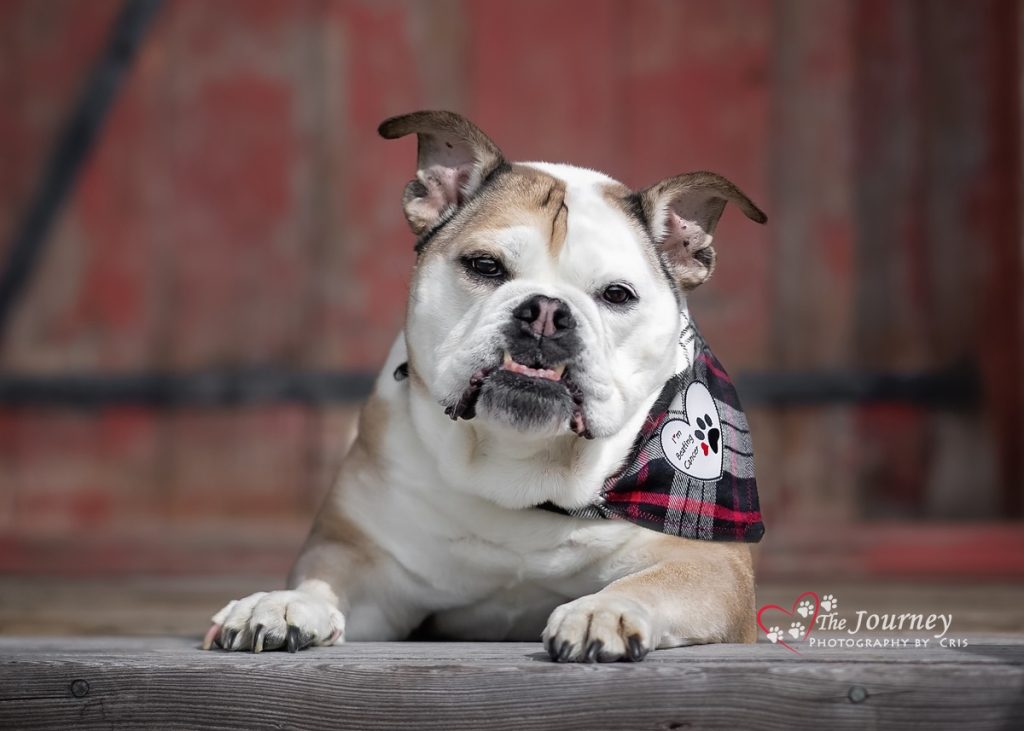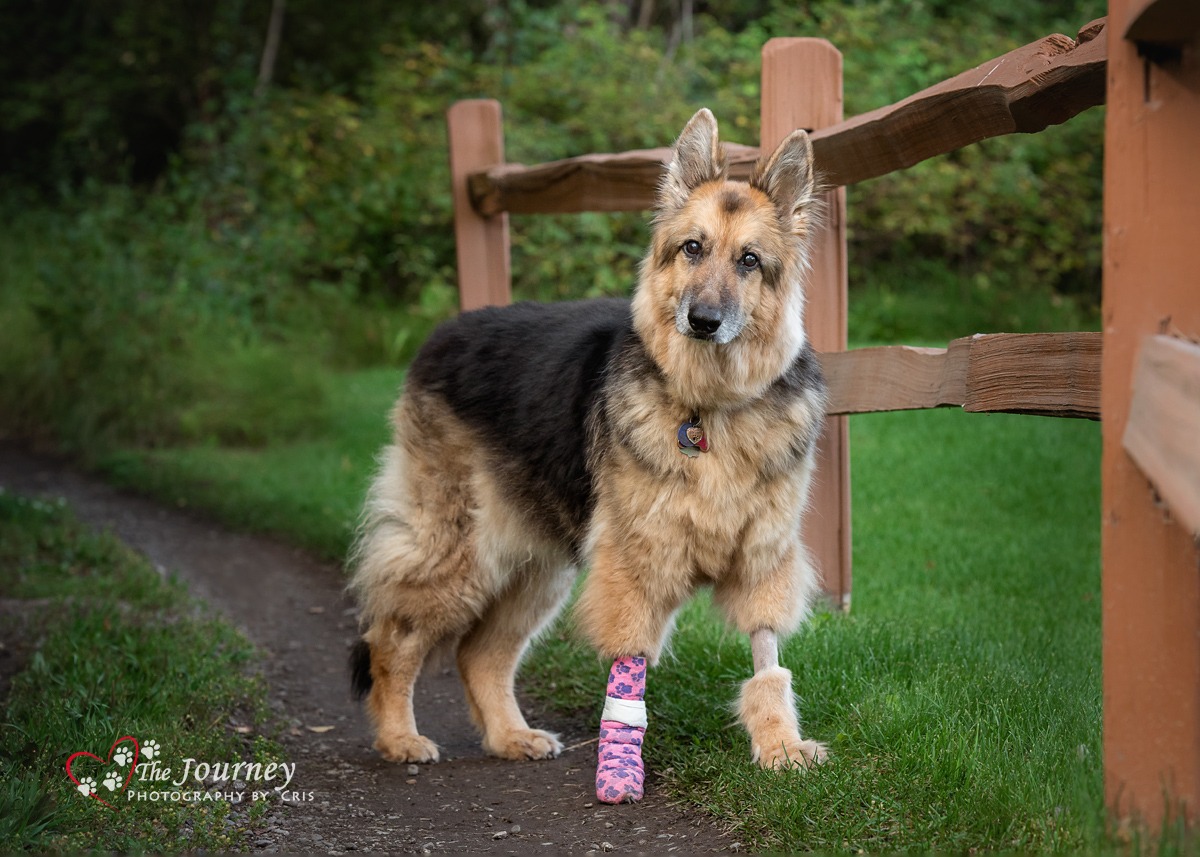They say that the worst words are comprised of 4 letters. I disagree. The worst word has 6 letters in it. Cancer. A word that neither needs an adjective or a verb to convey its message. For a pet parent, having a veterinarian utter the word cancer can leave you in a state of shock. I’ve sat there. Hoping for the best, but knowing that it’s likely the worst. Praying desperately that my furry best friend can get through this… Praying that I can do the same. Getting a cancer diagnosis is devastating, but it also isn’t necessarily a fatal sentence. For your pet, it's important to be present, be knowledgeable, and be an advocate for their health. Pet Cancer Awareness month is a great time to share info that can help you win the 6-letter word battle!
WHAT IS CANCER?
Each day, hundreds of animals are diagnosed with cancer. But, what is cancer? In the simplest of terms, cancer is the uncontrolled growth of abnormal cells. It develops when your pet’s normal mechanisms stop working. Old cells do not die off, but turn into extra cells that form a mass.
CAN YOU SEE THE MASS?
Sometimes yes and sometimes no. One of the odd things about cancer is that it’s unique to each animal. A friend of mine has lost 3 dogs to cancer, and yet none of the cases were the same. None of the treatments were the same. The only thing that was the same was my friends grief. But along the way she learned a few things that she shared with me:
- Pets are good at hiding cancer symptoms
- Pet oncologists have a wealth of information, just ask
- Some pets can heal, some don’t, but most all do well with treatment
- Pets tend to tolerate cancer treatments very well
A Friend’s Pet Cancer Awareness Story
As someone who adopts senior dogs, it’s not surprising that my friend would experience a pet with cancer. Her dog Odie, a 15 year-old pup that she rescued 6 months earlier, had rebounded and was full of energy. But on a Monday morning, Odie awoke and wouldn’t eat. Odie visited the veterinarian where they quickly found out that Odie had lymphoma. Everything happened in slow-motion for my friend. All she could think of was grabbing Odie and running out the door. Life should be fair for Odie. After being with the same woman for 14 years, he was dropped off at a shelter with instructions to be put down, a few months after his owner’s death. My friend finally found her footing and fought for Odie, and with the help of veterinarians and holistic practitioners was able to help extend his life by almost 3 years! This article contains some tips based on what she learned.
Photographs and Memories
When owners contact me to schedule a session for their cancer-stricken dog, it is a beautiful and emotional blessing. My photographs may be the last images they have of their beloved pet. And while dogs seem to have a peaceful sense of whatever their future holds, for their owners and me… Well, our time together is laden with tears, hugs, laughter, and a gratitude for a lifetime spent with a loving animal.
Me… Emotional?
Yes. A professional pet photographer is above all other things, a pet lover. So, listening to an owner whose dog has been given a few months to live is gut wrenching. But there is nothing I would rather be doing - though they are difficult sessions, I’m honored that I can capture special moments that the owners will treasure for years to come. Each and every one of the dogs have left a huge paw print on my heart. I’m humbled to have been part of their journey, even if it was only for a short time. Each one of the cancer dogs I’ve photographed have left an indelible mark on my soul. I write this blog post as a tribute to these special dogs I’ve photographed, as well as all pets who have battled this terrilbe disease.
What To Look For, Pet Cancer Awareness
Symptoms
Because pets are good at hiding their illnesses, it’s a good idea to take them to a veterinarian two times a year for check-ups. Always request blood tests, and if your pet is older, get a senior panel performed as well. With the lab reports, your veterinarian will have good insight into your pet’s health. If there’s a suspicion of cancer, see a veterinarian oncologist. Also, keep an eye out for the following symptoms:
- Abnormal stiffness
- Blood coming from pet’s mouth and/or rectum
- Diarrhea and/or vomiting
- Difficulty with stool or urination, or changes in stool frequency
- Firm swelling
- Increased thirst and urination
- Loss of appetite or difficulty eating
- Loss of interest in playing or exercising
- Masses along jaw or tooth/gum line
- Rapid weight loss
- Respiratory changes
- Severe lethargy
- Unusually strong/foul odors
Check for Swollen Lymph Nodes
Lymph nodes are glands that are throughout your pet’s body. The ones most easy to check are behind the jaw and knees. Feel the area for a swelling, and any abnormally large areas. This could indicate lymphoma.
Lumpy Area
Give your pet regular massages/rubs, and in that process check for lumps. While most lumps are fatty tissue or warts, don’t neglect them… They could be the beginning stages of cancer. You should discuss the lump with your vet, and monitor for growth or texture/shape changes.
Abdominal Area
Sometimes a pet’s stomach can look enlarged (distension). If this happens it’s best to get your pet to a vet to check for a mass or tumor in the abdomen.
Cough
A dry, non-productive cough in a pet, particularly in older one should be checked out. This type of cough can be a sign of lung cancer, however, dogs and cats can cough for any number of health-related reasons.
Lameness
If you have a large-breed animal, watch for unexplained lameness, as this can indicate bone cancer. This can also be true of smaller-breed animals, but is not particularly common.
Pet Nutrition to Fight Cancer
While each pet’s nutritional needs are unique - particularly if there are other health issues such as diabetes - there are studies that indicate certain foods and supplements that can help pets with cancer. As well as help defend against cancer in a pet.
Omega-3
Derived from fatty acids of fish oil (DHA and EPA), high-quality omega-3 is often not found in dry pet food. This is because it can turn rancid. It’s important that pets are given a premium omega-3 supplement made from fish and algae-sourced products. An excellent source is from water-packed, salt-free, bone-in, skin-on sardines.
Natural Antioxidants
Supplementing with natural antioxidants that come from whole foods (e.g. fruits and vegetables) are also excellent for both fighting off and against cancer. Stay clear of any fruit and vegetable that is toxic to pets, and instead focus on green leafy vegetables and berries. Pets eat these healthy, wholesome foods best when pulsed in a food processor.
High-Quality Protein
Protein is a great defense against illness in a pet, as it is a building block of cells. Feed the best quality, grass-fed protein possible. Also, minimize carbohydrates (specifically simple carbs like bread and pasta) as tumor cells get their energy from glucose in the bloodstream of a pet. Feed foods with a low glycemic index.
Probiotics
One of the most important things to do for a pet is to give them probiotics. We now know that gut health is key to a healthy pet (and human). Raw goat’s milk kefir is a wonderful whole-food supplement to feed your pet. Also, if you can find raw, salt-, onion-, and garlic-free sauerkraut you can add a bit to your pet’s meals.
Conjugated Linoleic Acid (CLA)
A naturally occurring fat found in dairy products (e.g. real, salt-free butter and full-fat milk or cream) has been shown to prevent the growth of cancer. This has been studied in animals, with breast cancer shown good results.
November is Pet Cancer Awareness month. And the fact that cancer affects our pets is sad. Cancer is the leading disease-related cause of death for domestic dogs and cats in the U.S.
Pet Cancer Awareness Month
While it’s unfortunate that pet cancer requires an awareness month, we can’t shy away from this important topic. Dogs are affected by cancer at a higher rate than any other companion animal. According to The Veterinary Cancer Society, cancer is the leading cause of death in 47% of dogs, especially dogs over age ten, and 32% of cats (source). Dogs are diagnosed with cancer at near the same rate as humans. These statistics are concerning.
How To Find A Board-Certified Veterinary Oncologist: Board-certified veterinary oncologists can be found in your area at ACVIM.org
What You Can Do To Advance Pet Cancer Awareness
For Pet Cancer Awareness Month you can get into the habit of feeling your dog’s body for lumps, bumps, and other abnormalities. Create a routine of checking for all of the symptom items mentioned above. Discuss the risk of cancer with your veterinarian. Feed your pet meals that help strengthen immunity and fend off free-radicals. Build in stress-free time that you and your pet spend together, just relaxing… As stress is horrible for our and our pet’s bodies. And most of all, be thankful!
Thankful that you get to share your life with your wonderful pet.





